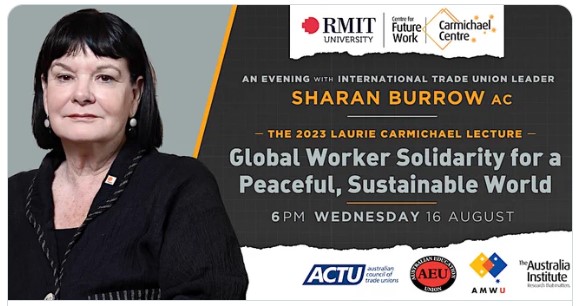It has been several months since the 23rd World Congress for Health and Safety was held in Sydney, pictured above. A major benefit of attending occupational health and safety (OHS) conferences is meeting people, old and new. I was honoured to meet Rene LeBlanc, an occupational hygienist from Canada. We had dinner on a very rainy and stormy Sydney night, and Rene agreed to an interview. Below is an edited version of part of that conversation (it was a long dinner). Rene was wide-ranging on his OHS topics.
Category: chemicals
The invisible and often very personal OHS hazard
There is a rather delicate work health safety challenge in the air as people increasingly return to working in close quarters with colleagues after the COVID-19 pandemic. Fragrances or, more precisely, hundreds of undisclosed chemicals in many scents and perfumed products, are playing havoc with the immune systems of COVID long-haulers.
In eastern Victoria, social worker Jenna* found herself gasping for breath in a meeting with a new heavily perfumed colleague. Jenna said:
“I started coughing uncontrollably. Within seconds, I could barely breathe, and I thought I was headed for hospital.”
Can OHS institutions be change agents?
Last night Sharan Burrow delivered the 2023 Laurie Carmichael Lecture in Melbourne. Her lecture was a little rambling and full of essential industrial and environmental changes but with little innovation on how to achieve them. (A transcript will be publicly released shortly) There was, however, an opportunity to ask her about the role of occupational health and safety institutions as change agents. Her response is below.
The continuation of engineered stone can no longer be supported
The Housing Industry Association (HIA) is an effective government lobbyist for its members who can be relied on to make a submission to whatever opportunity the governments offer. The HIA does not provide details of membership numbers or names, but it does list its sponsors and partners. Recently HIA made a submission on “the prohibition on the use of engineered stone”. Its position held few surprises.
Perhaps also unsurprising is Kate Cole’s justification for a ban on engineered stone.
Silicosis campaign is about safety but is also about politics
The calls for banning engineered stone‘s importation are curious and likely to be acted on later this week.
Politicians, unions and some OHS associations have undertaken a risk assessment and determined that elimination is the most effective harm prevention strategy. Previous risk assessments of silicosis have been reported on in this blog for some time without banning the material. The risks have not changed even with increased inspection and enforcement. So what has changed? Politics.
Research indicates OHS strategies
Last week, the Institute for Safety, Compensation and Recovery Research (ISCRR) conducted presentations of its latest research programs. Those projects included:
- Vicarious Trauma
- Evaluating Pilot Programs
- Bitumen Fume Exposure
- Systems Thinking
Silicosis risk controls exempted for the moment
In 2019, Dr Graeme Edwards said this of the cutters of engineered stone:
“We can’t just rely on the industry to self-regulate. We need to licence the industry and we need to regulate the product….. If we can’t do this, [banning] is a realistic option.”
Recent research commissioned by the Australian Council of Trade Unions (ACTU) and conducted by Curtin University seems to support a ban on the import of engineered stone products with such a high level of silica that cutting them, without suitable controls, can lead to silicosis.







